Peel and Stick Tiles vs Ceramic Tiles: Best for Laundry Rooms?
Choosing the right flooring for your laundry room remodel presents a classic dilemma. Do you opt for the quick, stylish, and budget-friendly appeal of peel and stick tiles? Or do you invest in the long-term, rock-solid durability of traditional ceramic tiles? This choice can feel overwhelming, with concerns about cost, longevity, and how your decision will affect your home's future value.
You need a solution that is moisture-resistant, tough enough for daily use, and fits your design vision. This article cuts through the confusion. We provide a clear, side-by-side analysis of peel and stick tiles vs ceramic tiles, tailored specifically for the unique demands of a laundry room. We’ll explore lifecycle costs, durability, and real-world examples to help you choose with confidence.
Why Laundry Rooms Need Special Tile Consideration
The laundry room is a utility workhorse. It faces challenges that most other rooms in your home do not. Ignoring these factors can lead to flooring failure, moisture damage, and wasted money. Understanding the specific needs of this space is the first step in making a smart investment.
High Moisture and Humidity Exposure
Your laundry room is a zone of constant moisture. From the steam of the dryer to potential washing machine leaks and utility sink splashes, the environment is consistently humid. Over time, this moisture can seep into flooring seams and subfloors, leading to mold, mildew, and structural rot.
A common mistake is choosing a floor that isn't rated for wet environments. Imagine a homeowner who installed a standard, non-water-resistant laminate. After a minor washer overflow, the planks swelled and buckled, requiring a complete tear-out and replacement, turning a simple mishap into a thousand-dollar repair.
Heavy Appliances and Foot Traffic
Laundry rooms endure unique physical stresses. They support heavy, vibrating appliances like washers and dryers, which weigh hundreds of pounds. The floor must be strong enough to handle this static load without cracking or compressing over time.
This room also sees frequent foot traffic as you carry heavy laundry baskets back and forth. The flooring needs a durable wear layer to resist scuffs, scratches, and dents from dropped detergent bottles or other items. A flimsy material will quickly show its age.
Design Importance for Resale Value
Don't underestimate the power of a well-designed laundry room. Modern buyers see it as more than just a utility closet; it's a functional part of the home. A clean, updated, and durable laundry room floor can significantly boost your home’s perceived value and appeal.
According to a 2024 survey by the National Association of Realtors, a dedicated laundry room is a top feature desired by 87% of homebuyers. Investing in quality flooring here isn't just for you—it's a strategic move for future resale. A thoughtful choice signals a well-maintained home.
Peel and Stick Tiles Overview
Peel and stick tiles, often made from vinyl, have evolved far beyond the flimsy squares of the past. Today's high-quality options offer impressive durability and sophisticated designs. They consist of a resilient top wear layer, a printed design layer, and a strong adhesive backing, making them a formidable contender for many home projects.
Materials and Price Range
Modern peel and stick tiles are typically luxury vinyl tiles (LVT). They are engineered to be water-resistant, scuff-resistant, and comfortable underfoot. You can find them in a vast range of styles, from realistic wood and stone looks to intricate geometric and encaustic-inspired patterns.
The primary benefit is affordability. A peel and stick laundry backsplash vs ceramic tiles on the wall or floor can save you a significant amount. Expect to pay between $1 to $5 per square foot. This low cost makes a full room transformation accessible for just a few hundred dollars. In fact, many people use them beyond the floor; to see their power in different applications, explore these kitchen transformations using peel and stick tiles for creative inspiration.
DIY Installation Appeal
This is where peel and stick truly shines. Installation requires minimal tools—typically just a utility knife and a measuring tape. You simply peel off the backing and press the tile firmly onto a clean, smooth subfloor. There's no need for messy mortar, grout, or a tile saw.
This ease of use turns a multi-day professional project into a weekend DIY victory. For homeowners looking for a quick and impactful upgrade, this is a huge advantage. If you're new to the process, our comprehensive guide on How to Install Peel and Stick Tiles in Laundry Room offers a perfect step-by-step tutorial. For even more general advice, you can also check out our broader guide on how to install peel and stick tiles and the best designs of 2025.
Modern Design and Variations
Forget the dated patterns of old. The best brands for peel and stick tiles in 2025 offer stunningly realistic textures and high-definition printed visuals. You can achieve the look of slate, marble, or hardwood without the associated cost or installation complexity.
For instance, a modern laundry room can feature a bold, black-and-white geometric peel and stick floor, paired with simple white cabinets for a high-contrast, custom look. Another popular application is creating a stylish backsplash behind a utility sink using subway or hexagonal peel and stick tiles, adding personality without a big commitment.

Ceramic Tiles Overview
Ceramic tile is a classic building material for a reason. Made from natural clay that is fired in a kiln at high temperatures, it creates a hard, dense, and exceptionally durable surface. It's a permanent flooring solution that has been trusted for centuries in the most demanding environments.
Material Composition and Long-Term Durability
The firing process makes ceramic tile incredibly resistant to wear and tear. It doesn't scratch, dent, or fade easily. A properly installed ceramic tile floor can easily last 20, 30, or even 50 years with minimal maintenance. It’s a true “set it and forget it” option.
Think of it like this: peel and stick is a sturdy jacket, but ceramic tile is a suit of armor for your floor. This makes it an ideal choice for a high-traffic, high-impact area like a laundry room.
Installation Challenges and Costs
The primary drawback of ceramic is the installation. It's a labor-intensive process that requires a prepared subfloor, mortar for adhesion, precise tile placement, and grout to fill the gaps. It often requires specialized tools and expertise, meaning most homeowners will need to hire a professional.
This significantly impacts the cost. While the tiles themselves can be affordable (starting around $2 per square foot), professional installation can add $10-$15 per square foot. A real-world laundry room remodel using classic ceramic tiles could easily cost over $2,000 for materials and labor.
Moisture and Heat Resistance Performance
Ceramic tile is virtually waterproof. When glazed and paired with sealed grout lines, it forms an impervious barrier that water cannot penetrate. This provides the ultimate peace of mind against washing machine leaks or plumbing mishaps.
It is also completely fireproof, adding a layer of safety around heat-producing appliances like dryers. This unmatched resistance to both water and heat makes ceramic the gold standard for utility spaces where conditions can be unpredictable.

Cost and Lifecycle Comparison
When comparing flooring, the initial price tag tells only half the story. To make an informed decision, you must consider the lifecycle cost—the total expense over the flooring's lifespan, including installation, maintenance, and eventual replacement. The difference between peel and stick and ceramic becomes much clearer over a 10-year period.
Initial Installation Costs Side-by-Side (100 sq. ft. room)
Peel and Stick Tiles
Materials: 100 sq. ft. @ $2.50/sq. ft. = $250
Installation (DIY): $0
Total Initial Cost: ~$250
Ceramic Tiles
Materials: 100 sq. ft. @ $3.00/sq. ft. = $300
Professional Install: ~ $12/sq. ft. = $1,200
Total Initial Cost: ~$1,500
Right away, the savings with peel and stick are massive. However, this is just the starting point of our financial analysis.
Maintenance and Replacement Costs Over 10 Years
Now, let's project the costs over a decade, factoring in durability. High-quality peel and stick tiles last about 5-7 years in a high-traffic area. Let's assume a replacement is needed at year 6. A ceramic floor will easily last beyond 10 years. Maintenance involves occasional grout sealing, a minor DIY expense. To ensure your investment lasts as long as possible, keeping up with cleaning is key. For easy upkeep of your stick-on tiles, our Peel and Stick Tile Maintenance Guide 2025 is an essential resource.
A case study illustrates this perfectly. A family chose affordable vinyl tiles for their laundry room. After five years of heavy use and one minor leak, several tiles began to lift and peel. They had to replace the entire floor. Meanwhile, their neighbor's ceramic tile, installed 12 years prior, looked exactly the same as the day it was installed. While the ceramic floor costs more upfront, its longevity provides predictable, long-term value.
- Peel and Stick 10-Year Total: ~$250 (Initial) + ~$300 (Replacement) = $550
- Ceramic Tile 10-Year Total: ~$1,500 (Initial) + ~$50 (Maintenance) = $1,550
Resale Value Considerations
How does your choice impact your home's worth? Real estate experts agree that ceramic tile is seen as a permanent, high-value upgrade. It contributes directly to the home's appraisal value. Buyers recognize it as a durable, premium feature. Peel and stick tile is often viewed as a temporary or cosmetic fix. While a stylish, well-installed floor won't hurt your home's value, it doesn't typically add to it. In some cases, if it appears worn or dated, buyers might see it as something they need to replace, slightly detracting from the home's appeal.
Which flooring would you choose for your laundry room?
Our Verdict: Which Is Best for Your Laundry Room?
After comparing cost, durability, installation, and design, the best choice depends entirely on your priorities. There is no single right answer, but there is a right answer for you. Let's identify which path aligns with your goals.
Best for Budget-Conscious, Quick Remodels
The winner is: Peel and Stick Tiles.
If your primary goals are affordability and a fast, dramatic transformation, peel and stick is the undeniable champion. You can achieve a completely new look in a single weekend for a few hundred dollars. It's the perfect solution for homeowners who want to test out a new style without a major financial commitment.
This option is also ideal for those who enjoy changing their home's decor every few years. The low cost and easy installation make it a low-risk design choice. Our guide to the Best Peel and Stick Tiles for Laundry Room Floors in 2025 is the top resource for finding quality products that match your style.
Best for Long-Term Durability and Resale Value
The winner is: Ceramic Tiles.
If you are in your "forever home" or want to make the smartest long-term investment, ceramic tile is the superior choice. Its incredible durability means you will likely never have to think about your laundry room floor again. It offers the best protection against moisture and wear.
From a resale perspective, ceramic is a clear asset. It signals quality and permanence to potential buyers, adding tangible value to your property. While the upfront cost is higher, the return on investment through longevity and home value is unmatched.
The Middle Ground: A Hybrid Approach
You don't always have to choose one or the other. A smart strategy is to use both materials where they perform best. This hybrid approach offers a fantastic balance of cost, durability, and high-end design.
For example, install durable ceramic tile on the floor, where it will withstand heavy foot traffic, vibrating appliances, and potential water damage. Then, use stylish and affordable peel and stick tiles for a laundry backsplash behind the washer and dryer or utility sink. This gives you a pop of personality and modern flair without breaking the budget, and it’s a brilliant take on laundry room tile ideas. Understanding how these tiles hold up is crucial, which is why reading about using peel and stick bathroom tile for moisture can provide extra confidence in their performance.

Your Decision-Making Checklist
Before you buy, run through this final checklist to confirm your choice:
- My Budget Is: - Under $500 (Lean toward Peel and Stick) - Over $1,000 (Ceramic is a strong option)
- My Timeline Is: - One Weekend (Choose Peel and Stick) - Flexible (Either works, but ceramic takes longer)
- My DIY Skill Level Is: - Beginner (Peel and Stick is foolproof) - Advanced / Hiring a Pro (Ceramic is possible)
- My Top Priority Is: - Style and Affordability (Peel and Stick) - Durability and Resale Value (Ceramic)
- How Long I Plan to Live Here: - Less than 5 years (Peel and Stick is a smart, temporary fix) - More than 5 years (Ceramic is a better long-term investment)
By answering these questions, you'll have a clear direction. Whether you choose the quick satisfaction of peel and stick or the lasting security of ceramic, you are now equipped to build a laundry room that is both beautiful and built to last.
Ready to find the perfect style for your project? Dive into this transformative review of Stickwoll peel and stick tiles, or sign up for our newsletter for more expert home renovation ideas delivered straight to your inbox.
Frequently Asked Questions (FAQ)
In a typical laundry room, high-quality peel and stick tiles can last from 5 to 7 years. Longevity depends on the quality of the tile, proper subfloor preparation, and the amount of foot traffic. Ensuring the floor is perfectly clean and smooth before installation is the most critical factor for a long-lasting bond.
Yes, you can, but preparation is key. The ceramic tile surface must be thoroughly cleaned and degreased. The main challenge is grout lines. You must fill the grout lines with a leveling compound to create a perfectly flat surface. If you don't, the outline of the old grout lines will eventually show through the new tiles.
Absolutely. A laundry room peel and stick backsplash is a fantastic idea. The wall area doesn't get the same wear as the floor and is less prone to standing water. Most modern peel and stick tiles are highly water-resistant and built to handle the humidity from a dryer, making them perfect for this application. In fact, our research on the top waterproof peel and stick shower tiles for 2025 confirms their effectiveness in even the most moisture-rich environments.
For both tile types, the biggest mistake is improper surface preparation. For peel and stick, it's failing to clean the subfloor meticulously, which weakens the adhesive bond. For ceramic, it's not ensuring the subfloor is level and rigid, which can lead to cracked tiles and grout down the line. Taking the extra time to prep the surface is the best investment you can make.

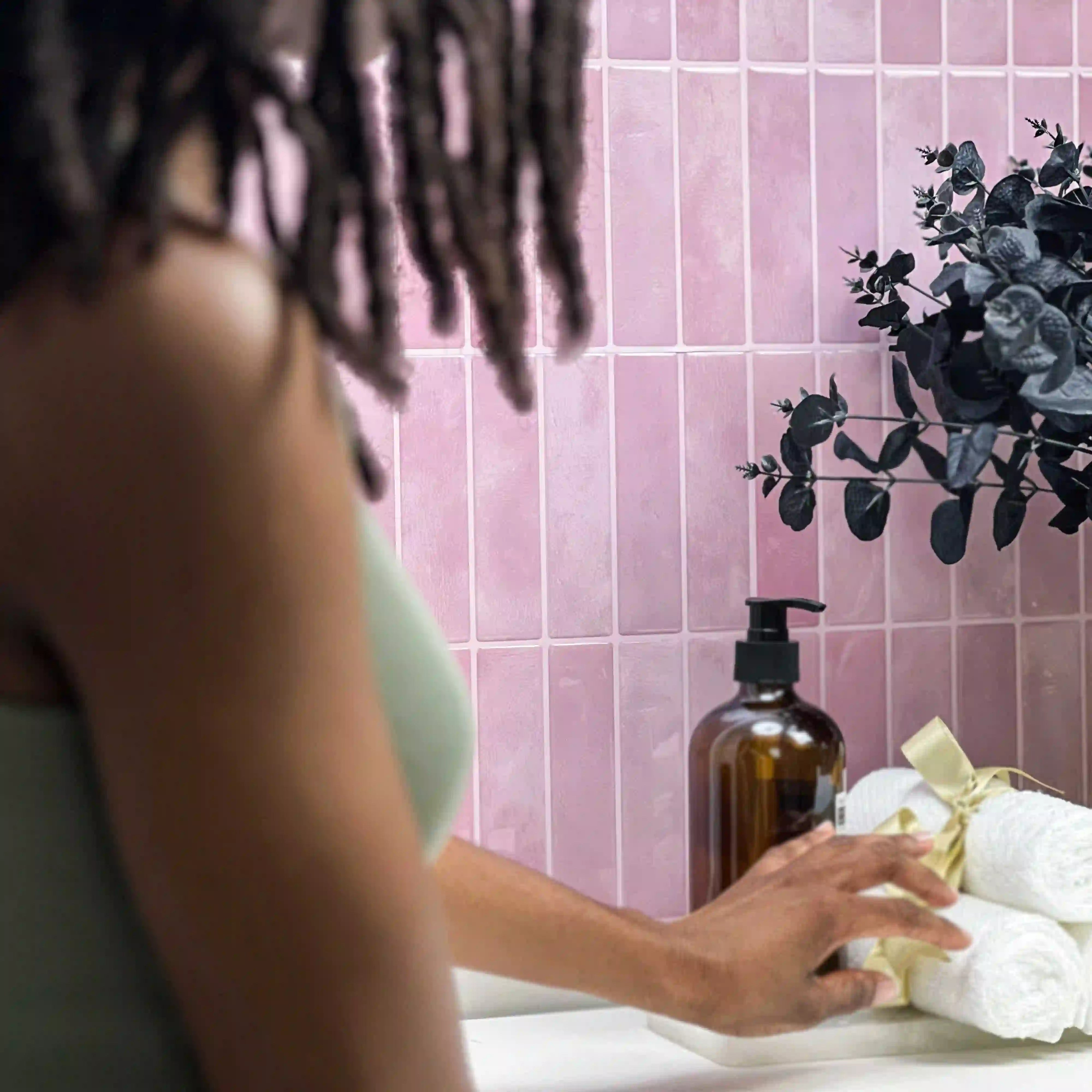
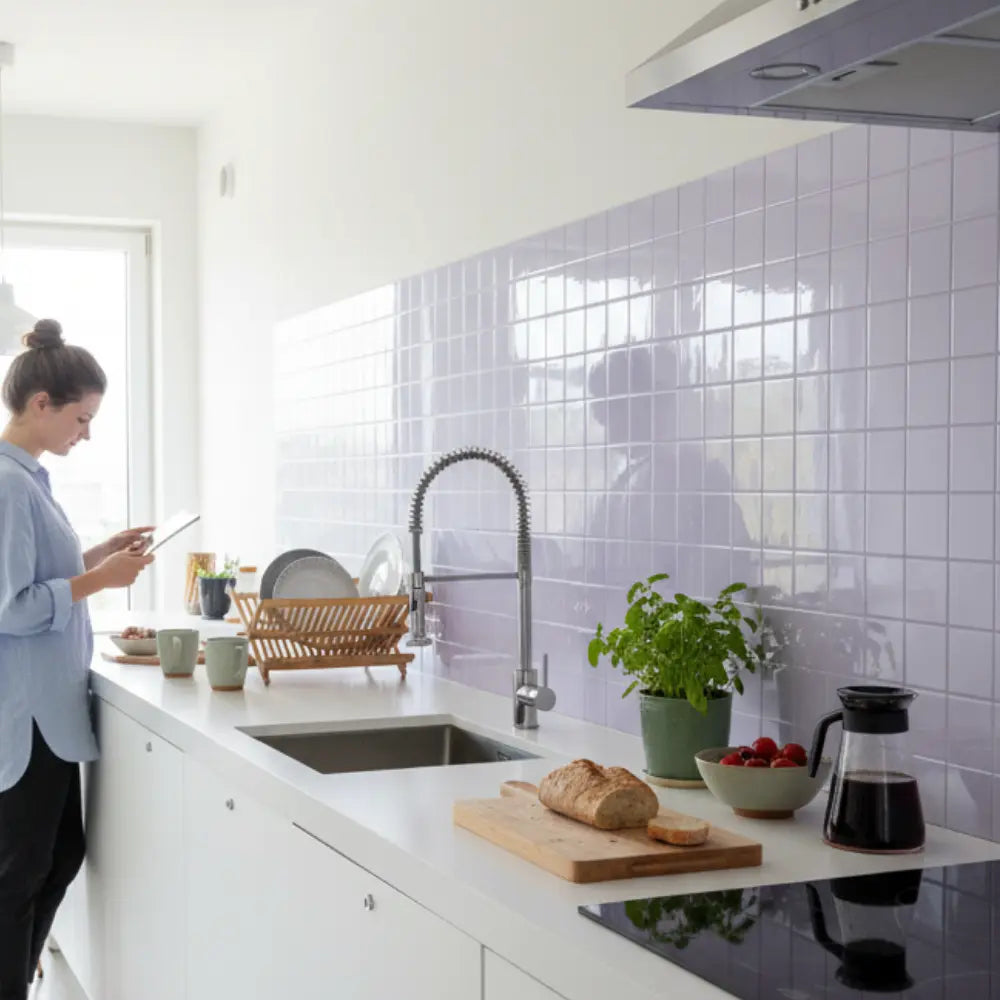
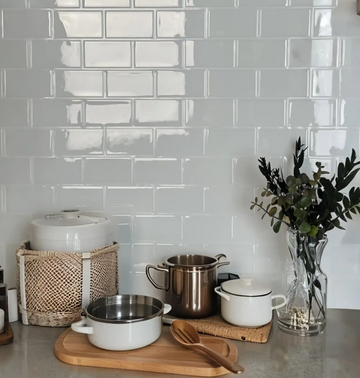
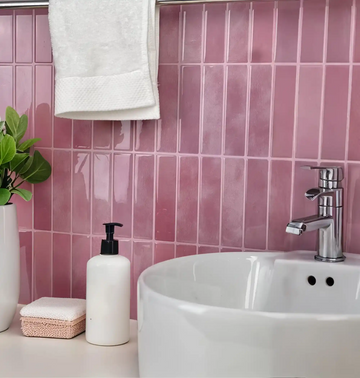
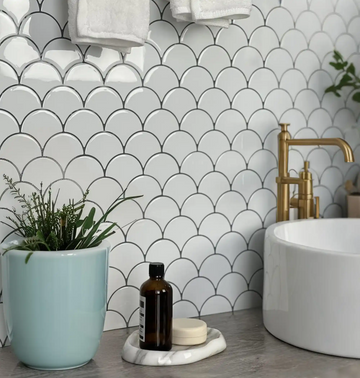
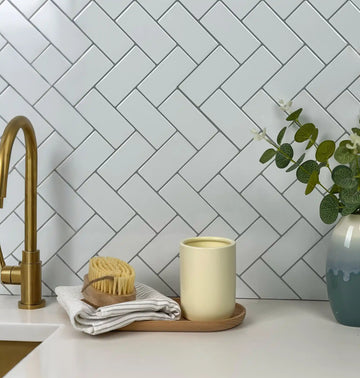
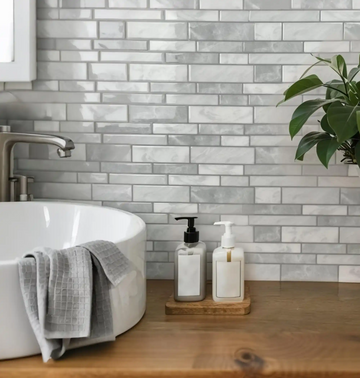
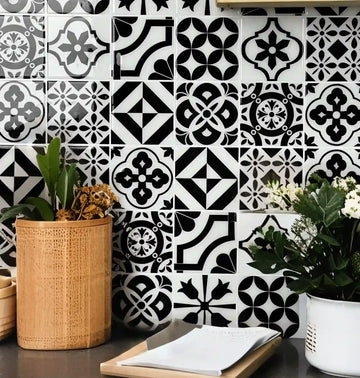
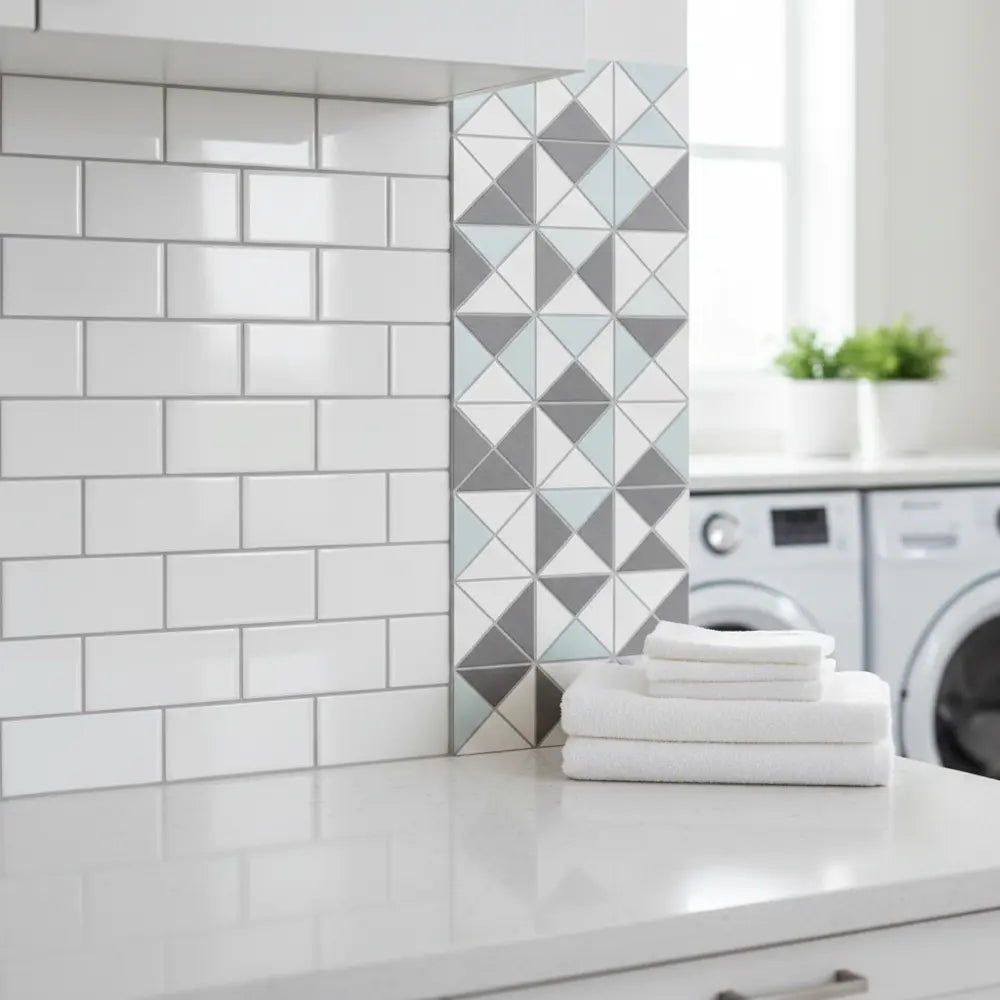
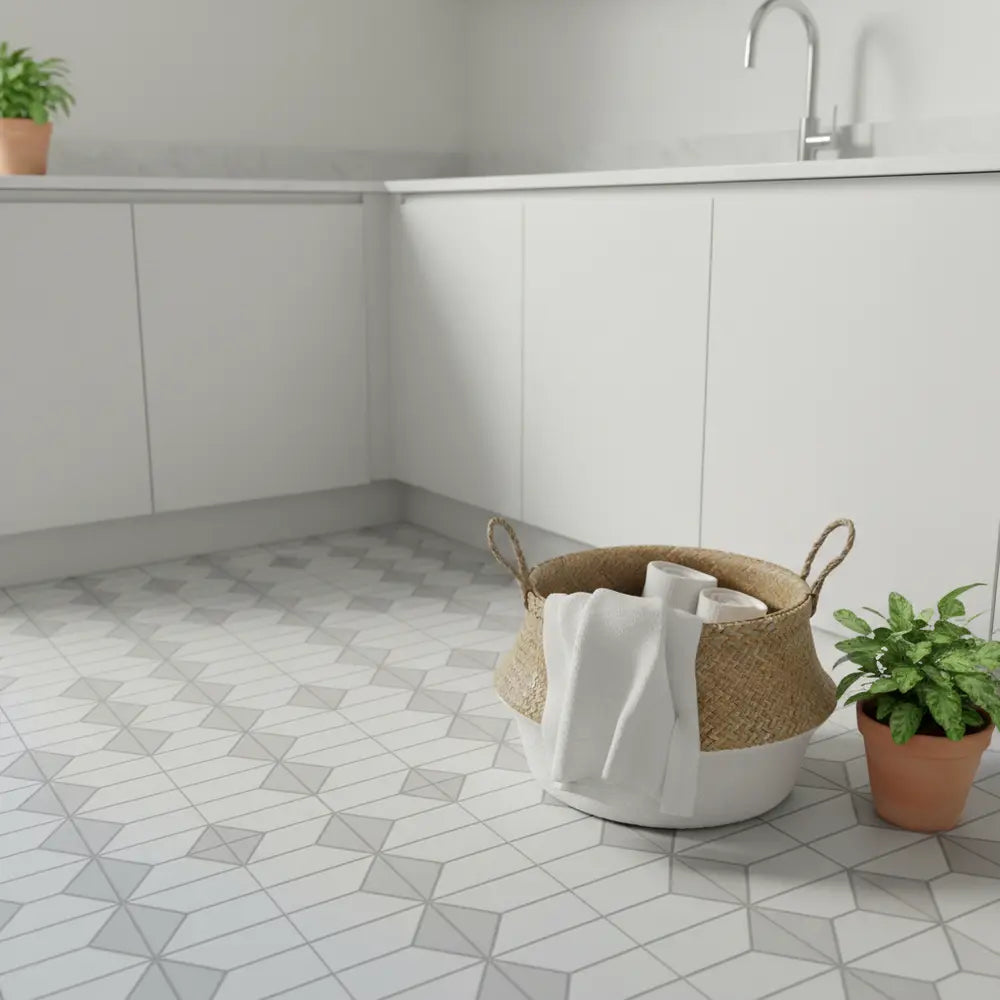
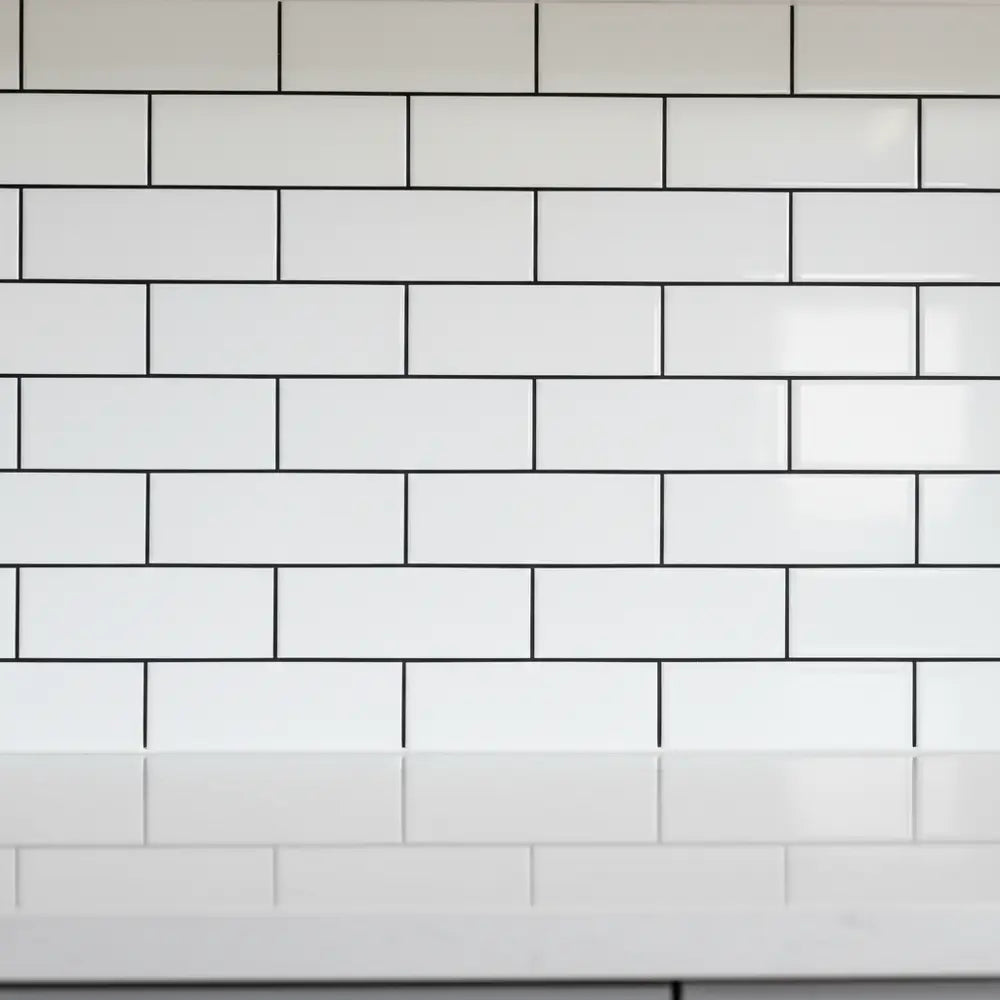
Dejar un comentario
Este sitio está protegido por hCaptcha y se aplican la Política de privacidad de hCaptcha y los Términos del servicio.